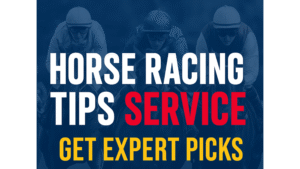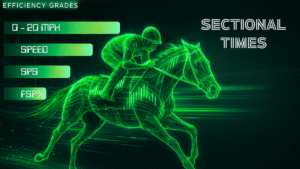Racecard Example Breakdown: Your Definitive Guide to Reading A Horse Racing Card & Form
The Racecard – Your Secret Weapon for Horse Racing Success
Imagine holding the key to predicting a horse’s performance, understanding a jockey’s intent, and spotting the hidden value in a betting market. That key, in the thrilling world of horse racing, is the racecard. Far more than just a simple list of runners, a racecard is a dense tapestry of critical data, intricate form figures, and indispensable insider statistics – a true blueprint for success, if you know how to read it.
For many, the sheer volume of abbreviations, numbers, and nuanced details on a typical racecard can feel overwhelming, often leading to missed opportunities and uninformed bets. But what if you could quickly and confidently interpret every detail, turning initial confusion into crystal clarity and raw data into actionable insights?
At Betting Edge Titans, we believe informed betting is smart betting. This comprehensive guide will meticulously break down every single section of a standard horse racing racecard. We’ll utilize a real-world example to ensure you don’t just learn the terms, but truly understand how to apply this knowledge, transforming you from a casual observer into a sharp, strategic analyst of the highest caliber.
Get ready to unlock the powerful insights hidden within every racecard and elevate your horse racing analysis to a professional level.
Quick Jump: Navigate the Racecard Sections

1.Race Overview: The Contextual Framework
The very first section of any racecard sets the stage, providing the essential contextual framework for the race you are analyzing:
- Time: The precise scheduled start time of the race (e.g., 2:30 PM, 14:30). Crucial for planning your viewing and betting schedule.
- Track & Distance: Identifies the specific racecourse (e.g., “Newmarket,” “Cheltenham,” “Kempton Park”) and the exact length of the race. Distances are typically shown in miles and furlongs (e.g., “1m 2f” for 1 mile and 2 furlongs, or “2m 4f” for 2 miles and 4 furlongs over jumps).
- Pro Insight: Horses often develop strong preferences for specific track characteristics (e.g., left-handed vs. right-handed, undulating vs. flat) and distances. Identifying a “course specialist” or a horse stepping significantly up or down in trip is a key early betting angle.
- Race Name & Conditions: The official title of the race (e.g., “The Betfred Derby Trial,” “Class 3 Handicap Chase”) and any specific conditions governing the race (e.g., “Fillies’ Novice Stakes,” “for 4yo+ only”). This instantly tells you what kind of race it is and who is eligible.
- Class: Races are meticulously graded by quality and prestige, typically ranging from Class 1 (the absolute highest, encompassing Group 1, Group 2, Group 3 on the Flat, and Grade 1, Grade 2, Grade 3 in National Hunt) down to Class 7 (lower-grade handicaps). A horse competing in a lower class than its last run might, in theory, find the competition easier, indicating a strategic placement by the trainer.
- Age Group: Indicates the minimum and maximum age of horses allowed to compete (e.g., “3yo+” for three-year-olds and older, “2yo only”). Younger horses’ form and potential should be viewed differently from older, more established runners.
- Rating Band (e.g., 0-70 Handicap): Exclusively found in handicap races, this denotes the range of Official Ratings (OR) for horses eligible to run. A “0-70 Handicap” means only horses with an OR between 0 and 70 (inclusive) can enter this specific race. This ensures a theoretically level playing field.
- Runners: The total number of horses officially declared to run in the race. This figure is critical as it directly impacts the place terms for each-way betting.
- Going: The official description of the track surface condition (e.g., “Good to Soft,” “Heavy,” “Firm”). This is an absolutely vital factor as many horses perform significantly better or worse on certain types of ground. Always factor a horse’s preferred going into your analysis.
- Flat or A/W: Specifies if it’s a Flat race (run on turf, or occasionally an artificial turf-like surface), or an All-Weather (A/W) race conducted on a synthetic surface (like Tapeta, Polytrack, or Fibresand). A/W racing allows for year-round competition.
- Stalls Position (Flat Only): Shows the starting gate position on the track, typically a number from 1 upwards. On certain courses (e.g., Chester, Goodwood over specific distances), a low or high draw can provide a considerable, sometimes race-deciding, advantage depending on the track’s configuration and current going.
2.Racecard Number and Draw (NO. / DRAW)
NO. refers to the horse’s unique number on the racecard. This number directly corresponds to the saddlecloth number the horse will wear during the race for easy identification.
DRAW (applicable only in Flat racing) indicates the specific numerical stall from which the horse will start the race.
- Example: If you see “4 (1)”, it means horse number 4 is drawn in stall 1.
- Expert Insight: The draw can be a surprisingly critical factor, especially in large fields, over short distances, or on sharp, turning tracks. A poor draw can force a horse to race wider than ideal, covering more ground, or expending too much energy early to gain a preferred position. Researching “draw biases” for specific courses and distances can yield a significant edge.
3.Form Figures (FORM)
The “Form” column is a succinct, powerful visual history of a horse’s recent performance. Read from left (oldest race) to right (most recent race), it’s an invaluable snapshot of a horse’s current ability, consistency, and how it handles different conditions.
- Numbers (1-9): Represent the horse’s official finishing position in its last starts. A “1” signifies a win, a “2” means second place, and so on.
- Zero (0): Indicates the horse finished 10th or worse in that particular race.
- Dashes (-): Signify a break in the horse’s racing career, typically a new season, a significant layoff, or a period of rest/injury rehabilitation. For example, “2-13” means the horse finished 2nd, then had a break, then finished 1st and 3rd in its next two runs.
- Letters (Non-Finishers / Other Outcomes): These codes indicate unusual or non-standard race outcomes:
- P: Pulled Up – The jockey intentionally stopped the horse mid-race (often due to distress, tiredness, or the horse losing its chance).
- F: Fell – The horse fell during the race (common in jump racing).
- U: Unseated rider – The jockey fell off the horse.
- R: Refused to race – The horse would not start the race.
- V: Void – The race was declared void.
- L: Left at start – The horse didn’t start with the others.
- D: Disqualified – The horse was disqualified post-race (e.g., for interference, a banned substance).
- S: Slipped up – The horse lost its footing during the race.
- Example: “45222” indicates a horse that has shown consistency by finishing 4th, 5th, then consecutively placing 2nd in its last three outings. A form of “12-31” suggests a win, 2nd, then a break, followed by a 3rd and another win.
- Expert Insight: Don’t just focus on wins. A string of 2s and 3s suggests a highly consistent horse that is “knocking on the door” and due a win. Conversely, a string of poor performances followed by a sudden “1” might indicate a dramatic improvement or a favourable handicap mark. A “P” or “F” can sometimes be forgiven if the horse bounced back strongly next time out, but consistent non-completions are a red flag.
4. Horse Name and Headgear
The horse’s official name is displayed prominently. Adjacent to the name, you’ll often find crucial abbreviations indicating specific headgear the horse will be wearing to aid its performance, focus, or behaviour.
- Headgear Abbreviations:
- b: Blinkers – Solid cups attached to the bridle that completely restrict a horse’s side vision, encouraging it to focus solely on the race ahead.
- h: Hood – A fabric hood worn by the horse, often in the parade ring or at the start, to help calm it down. Sometimes worn during the race for the same purpose.
- p: Cheekpieces – Sheepskin ‘cups’ attached to the bridle that partially obscure a horse’s rear vision, primarily to aid concentration without full restriction.
- t: Tongue tie – A strap used to secure a horse’s tongue to prevent it from getting over the bit (the mouth-piece of the bridle), which can impede breathing or control.
- v: Visor – Similar to blinkers but with small holes cut into the cups, allowing the horse some limited side vision while still promoting focus.
- e: Eyecover – Mesh covers worn over the eyes, typically to protect from dirt kickback on artificial surfaces.
- First-Time Use: A number after the headgear code (e.g., b1) means the horse is wearing that specific equipment for the first time. A debut in new headgear can sometimes spark a significant improvement in performance, making it a notable betting angle.
Additional Course/Distance & Form Abbreviations:
These important symbols appear next to the horse’s name and provide quick insights into its proven suitability or recent performance:
- C: Has won at this specific Course previously.
- D: Has won over this specific Distance previously.
- CD: Has won over this exact Course and Distance in the same race. This is a very strong indicator of proven suitability under identical conditions.
- C D: (Less common) This indicates the horse has won at the course AND at the distance, but not necessarily in the same race. For example, it might have won a 1-mile race at Ascot, and another 1-mile race at Newbury, but not necessarily a 1-mile race specifically at Ascot. It still shows aptitude for both.
- BF: Was a Beaten Favourite last time out. This means the horse was the market leader but failed to win. It can suggest a horse is “due” a win, or that its form requires closer scrutiny to understand why it disappointed.
- Expert Insight: Headgear changes are a key betting angle that can often lead to a ‘bounce’ in form. Always pay attention to “CD” horses, as their proven ability on the exact course and distance makes them inherently trustworthy under similar conditions.
5. Age
This column simply displays the horse’s age in years. It’s important to remember that in horse racing, all horses officially age one year on January 1st, regardless of their actual birth date. This means a horse born in May will be considered a ‘yearling’ from the following January 1st until the next, effectively turning two years old then.
- Young Horses (2-3yo): These horses are often still physically maturing and improving rapidly. Their form can be inconsistent as they gain experience, but they also offer significant potential for future progression.
- Middle-Aged Horses (4-6yo): Typically considered to be at their peak of physical maturity and performance, often showcasing consistent and reliable form.
- Older Horses (7yo+): Can be highly experienced, consistent, and durable, especially over jumps. However, some may be regressing, and their form might become more conditional on specific factors like preferred going or distance.
- Expert Insight: Age is a crucial factor when assessing a horse’s potential for improvement or decline. A lightly raced 3-year-old taking on older horses in a handicap might be “well in” (favourably handicapped) if it’s still on an upward curve, holding significant potential for future wins.
6.Weight (WGT)
This represents the total amount of weight the horse is required to carry in the race, typically expressed in stones and pounds (e.g., “9-7” means 9 stone and 7 pounds). This total includes the jockey’s weight, the saddle, and any additional lead weights strategically placed within the saddle to reach the assigned total.
- Handicap Races: In handicaps, weight is the great equalizer. It is assigned by the official handicapper based on the horse’s Official Rating (OR) – theoretically, the higher the OR, the more weight it must carry to give all horses an equal chance.
- Weight for Age Races: In certain race types (e.g., Graded/Group races), horses carry specific weights based purely on their age and sex to ensure fair competition across different age groups and genders.
- Pro Insight: Weight can be a surprisingly significant factor, especially over longer distances, in larger fields, or on testing (soft/heavy) ground. Even a few pounds can spell the difference between winning and losing. A horse carrying significantly less weight than its rivals (often due to a claiming jockey’s allowance) can have a real, tangible advantage.
7.Official Rating (OR)
The “Official Rating” (OR) is a crucial numerical value assigned to a horse by the official racing authority (e.g., the British Horseracing Authority or BHA in the UK). It represents the handicapper’s assessment of a horse’s ability and is fundamental to the integrity of handicap racing.
- Higher OR = Better Perceived Ability: A higher Official Rating indicates a horse of superior perceived ability and a stronger class of performer.
- Handicap Benchmark: The OR is the bedrock upon which the weights a horse must carry in handicap races are determined.
- Key for Value Betting: Comparing a horse’s current OR with its past winning ORs, or its highest career ratings, is absolutely crucial for identifying if a horse is “well-handicapped” for its current race. If today’s OR is lower than its previous winning marks, and the horse is returning to its ideal conditions, it could signal a horse primed to outperform its weight.
- Expert Insight: Always look for horses whose OR has dropped in recent starts due to poor form but are now returning to optimal conditions (preferred going, distance, track). This often signals a horse whose current weight is lenient compared to its true potential, making it a prime candidate for a strategic wager.
8.Jockey and Allowance
This column prominently lists the name of the jockey booked to ride the horse in the race. The jockey’s skill, experience, and current form can significantly influence a race outcome.
- Allowance (Claim): A number in brackets directly after the jockey’s name (e.g., “(5)”) indicates a claiming jockey (an apprentice on the Flat or a conditional in National Hunt racing). This number signifies the number of pounds by which they reduce the horse’s assigned weight, due to their relative inexperience. A (7) claim is the highest, gradually reducing as the jockey rides more winners.
- Jockey Changes: A change of jockey can be a highly significant factor. A top-tier jockey taking the ride on a horse that previously had a less experienced rider can be a powerful positive sign, reflecting increased trainer confidence or a strategic move to optimize performance.
- Expert Insight: Knowing which jockeys are currently “in form” or have a particularly good record at a specific course or with a certain trainer can add an extra layer of depth to your analysis. Some jockeys also excel with particular riding styles (e.g., front-running specialists, those who excel at holding horses up for a late burst).
9. Trainer and Recent Form Percentage (RTF%)
This section displays the horse’s trainer’s name – the individual responsible for the horse’s preparation, fitness, and strategic placement. Often, you’ll also see a Recent Form Percentage (RTF%) next to the trainer’s name.
- RTF% (Racing Post specific): This proprietary figure (primarily from Racing Post) indicates the percentage of a trainer’s runners that have performed to market expectations or finished in the placings over a recent period (e.g., the last 14-28 days). It serves as an excellent barometer of the stable’s current health and effectiveness.
- Trainer Form: A trainer consistently sending out winners or maintaining a high RTF% is considered “in form.” Their runners are more likely to be well-prepared, strategically placed, and highly competitive. Conversely, a prolonged low RTF% might indicate a stable currently struggling with health or form issues.
- Expert Insight: Trainer form is a powerful, yet sometimes overlooked, factor in race analysis. A horse may be well-bred and highly rated, but if its trainer is enduring a long losing spell, it’s a significant caution. Horses from “hot” stables often outperform their odds.
10.Topspeed Rating (TS)
The “Topspeed Rating” (another valuable Racing Post proprietary figure) is a highly sophisticated, speed-based rating calculated for a horse’s previous runs. This rating is meticulously adjusted for various race conditions like the going, distance, and even the individual pace of the race.
- Objective Speed Measure: It aims to provide the most objective possible measure of how fast a horse ran in previous races, independent of class.
- Higher TS = Faster Performance: A higher Topspeed rating indicates a superior overall performance in terms of raw speed and efficiency relative to past races.
- Pro Insight: The OR/TS Correlation (A Value Betting Secret): Topspeed ratings are particularly potent on the Flat. A horse with a high TS returning to its preferred conditions often signifies a genuine contender. Crucially, a profound indicator of a “well-handicapped” horse is when its Topspeed rating from a recent, strong performance is higher than or closely matches its Official Rating. This discrepancy suggests the horse is capable of running to a higher level than its current weight suggests, making it a prime candidate for a strategic, value-based wager in handicap races.
.
11.Racing Post Rating (RPR)
The “Racing Post Rating” (RPR) is a comprehensive numerical figure assigned to each horse by the highly experienced and knowledgeable analysts at Racing Post. Unlike the OR, which is for handicapping, the RPR gives you a more subjective, yet highly informed, view of a horse’s actual overall performance level.
- Holistic Assessment: The RPR considers a multitude of factors, including a horse’s recent form, the quality of opposition faced in previous races, the pace and flow of those races, and prevailing conditions.
- Comparative Tool: The RPR provides an incredibly valuable tool for directly comparing the overall ability and class of different runners in a race, offering a quick snapshot of their relative merits.
- Expert Insight: While the Official Rating is the handicapper’s number for weight allocation, the RPR gives you a view of a horse’s true achieved performance level. Look for horses whose recent RPRs suggest they are consistently performing at a level above their current handicap mark, especially if they are dropping in class for today’s race – this indicates potential.
12.Odds & Betting Markets
The “Odds” column displays the latest betting odds for each horse to win the race (e.g., 5/1, 20/1, Evens). These odds are a dynamic reflection of the betting market’s collective opinion on a horse’s chance of winning, constantly fluctuating based on money wagered.
- Understanding Odds: Odds reflect probability. Lower odds mean a higher perceived chance of winning by the market. However, smart betting isn’t just about backing the favourite.
- Value Betting: The essence of profitable betting lies in finding horses whose true chance of winning is greater than their implied probability based on the odds offered. Use all the information on the racecard to identify these “overpriced” opportunities.
- “Place Bet” Option (Each-Way): This refers to the Each-Way betting markets. It allows you to place a bet not just on a horse to win, but also to “place” (finish within the top 2, 3, or 4 positions, depending on the race type and field size, as dictated by standard industry rules). The “Place Bet” odds are typically a fraction (e.g., 1/4 or 1/5) of the win odds.
- Expert Insight: Never bet purely on odds. Use your thorough racecard analysis (combining form, ratings, conditions, and trainer/jockey insights) to identify horses whose underlying data suggests they are a better prospect than their odds imply. Monitoring odds movements (market movers) can also provide clues from professional punters who are backing horses strongly.
Unlocking the Full Potential: Advanced Analysis & Strategic Betting
Understanding the individual elements of a racecard is an outstanding start. However, the true art of professional-level horse racing analysis lies in synthesizing these diverse data points, cross-referencing information, and interpreting overarching trends to paint a truly comprehensive picture of a horse’s winning chances.
- Synthesize Information: Never look at individual sections in isolation. Connect a horse’s recent form figures with any headgear changes, correlate Official Ratings with the weight carried, and align trainer form with jockey bookings. It’s the interrelation of these factors that reveals the full story.
- Condition Check is Paramount: Always rigorously align a horse’s known preferred going (track condition) and optimum distance with today’s exact race conditions. A horse with stellar form on “soft” ground might be completely ineffective on “firm,” regardless of its ratings.
- Pace Analysis (The Unseen Factor): While not explicitly detailed on every racecard, understanding how a race might be run (e.g., likely strong early pace vs. a slow, tactical pace) is absolutely crucial. Will your chosen horse’s preferred running style (front-runner, hold-up horse, mid-pack) suit the expected pace scenario? Understanding this unseen dynamic often separates casual bettors from professional punters. (This is why our dedicated “Understanding Pace in Horse Racing” guide is so incredibly valuable!)
NEXT UP
How To Read A Race Card
Learn how to compare a horse’s projected ceiling with their Official Rating to assess suitability.
FAQs
A horse is well-suited when its historical performance matches today’s trip, surface, class, and setup — particularly when PR (performance rating) aligns with its current OR and profile breakdowns validate suitability.
PR is the projected ceiling of competitiveness — how good the horse can realistically be under ideal conditions. OR is the official handicap rating. When PR is above OR, the horse may be 'well-in' at the weights.
My analysis is focused on profiling suitability and performance logic — not on predicting market value. I help readers understand which horses are competitive under the conditions, regardless of price.
Yes — profiling helps identify horses likely to run to their level (or not), which is crucial for both place-only confidence and spotting viable lays when horses are unsuited or overrated in context.
Final Thoughts: Your Racecard Mastery Begins Now
You’ve just completed a profound journey into the heart of horse racing analysis: the racecard. By understanding every intricate detail – from a horse’s nuanced form figures and specific headgear to the jockey’s crucial allowance and the trainer’s current success rate – you are no longer just making educated guesses; you are equipped to make informed, evidence-based betting decisions.
This newfound mastery of the racecard isn’t just about the potential for winning bets; it’s about appreciating the incredible depth, strategy, and sheer intellect involved in the sport of kings. You’ll watch races with an entirely new level of understanding, discuss form and tactics with newfound confidence, and truly engage with every aspect of this captivating sport.
Bookmark this page now as your essential companion and go-to reference for every single race day. Revisit it often to sharpen your skills, reinforce your knowledge, and continually refine your analytical edge.
This comprehensive guide is proudly brought to you by Betting Edge Titans – your trusted partner in educating, informing, and supporting your journey to smarter, more successful horse racing betting. Unleash your inner analyst















